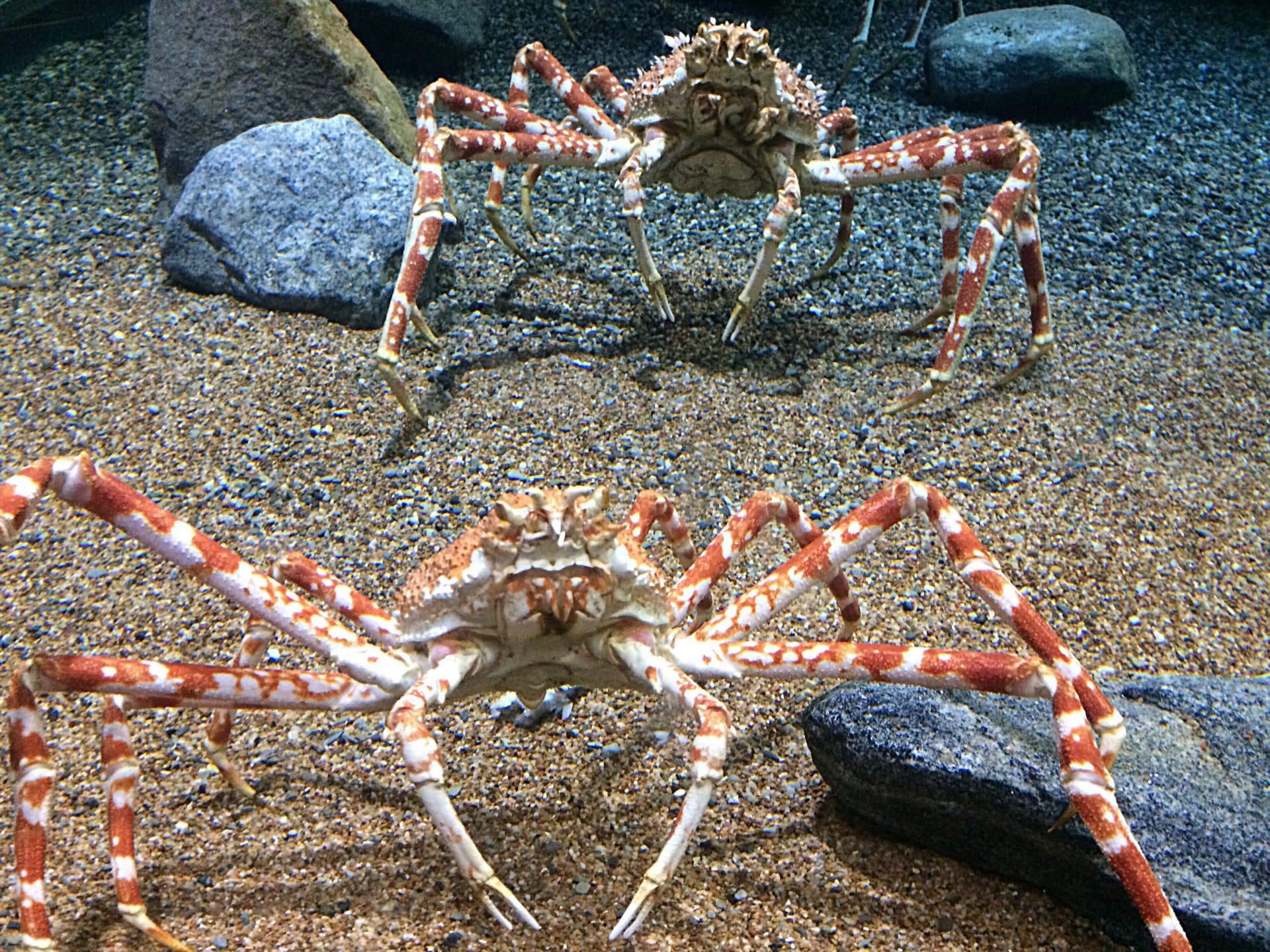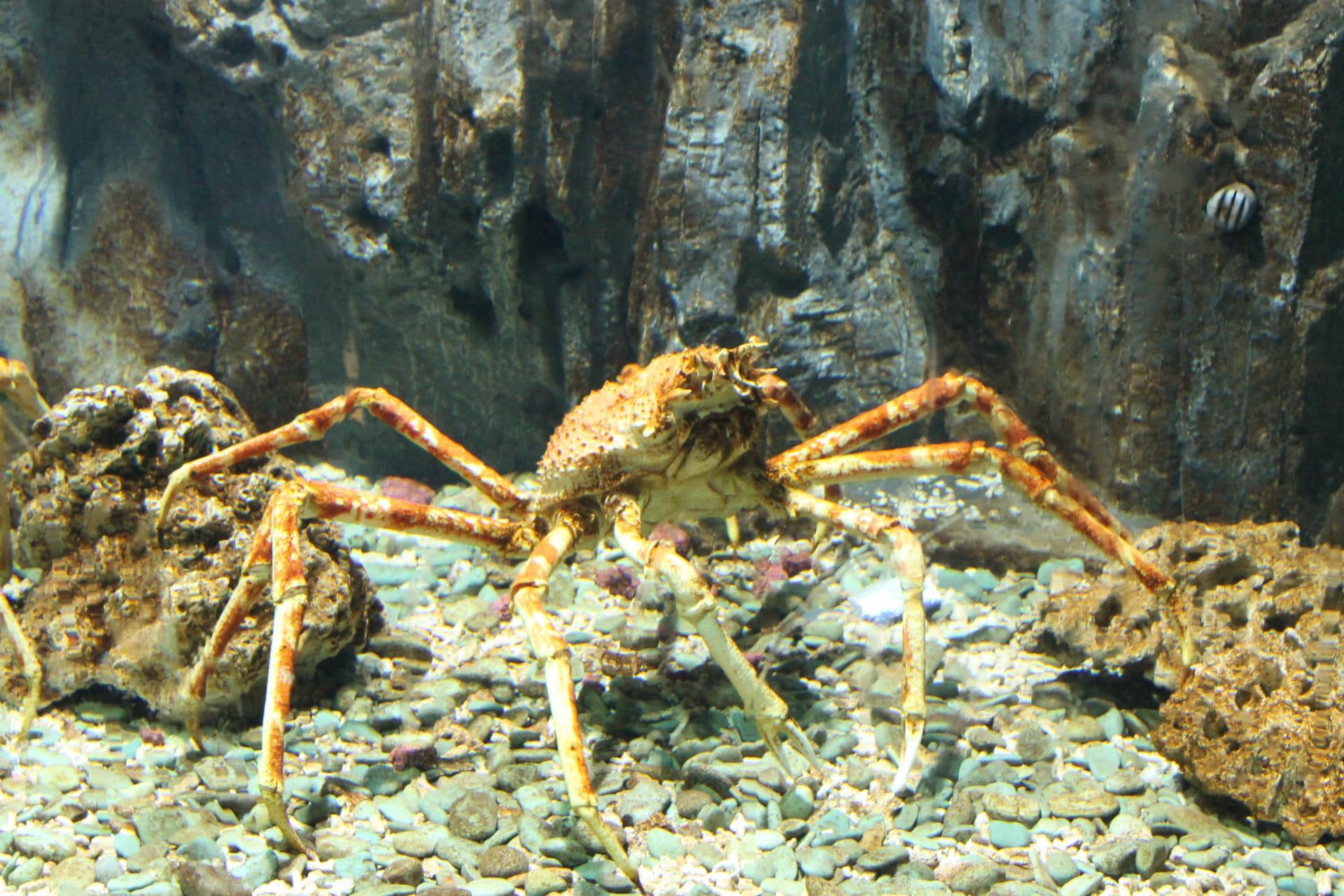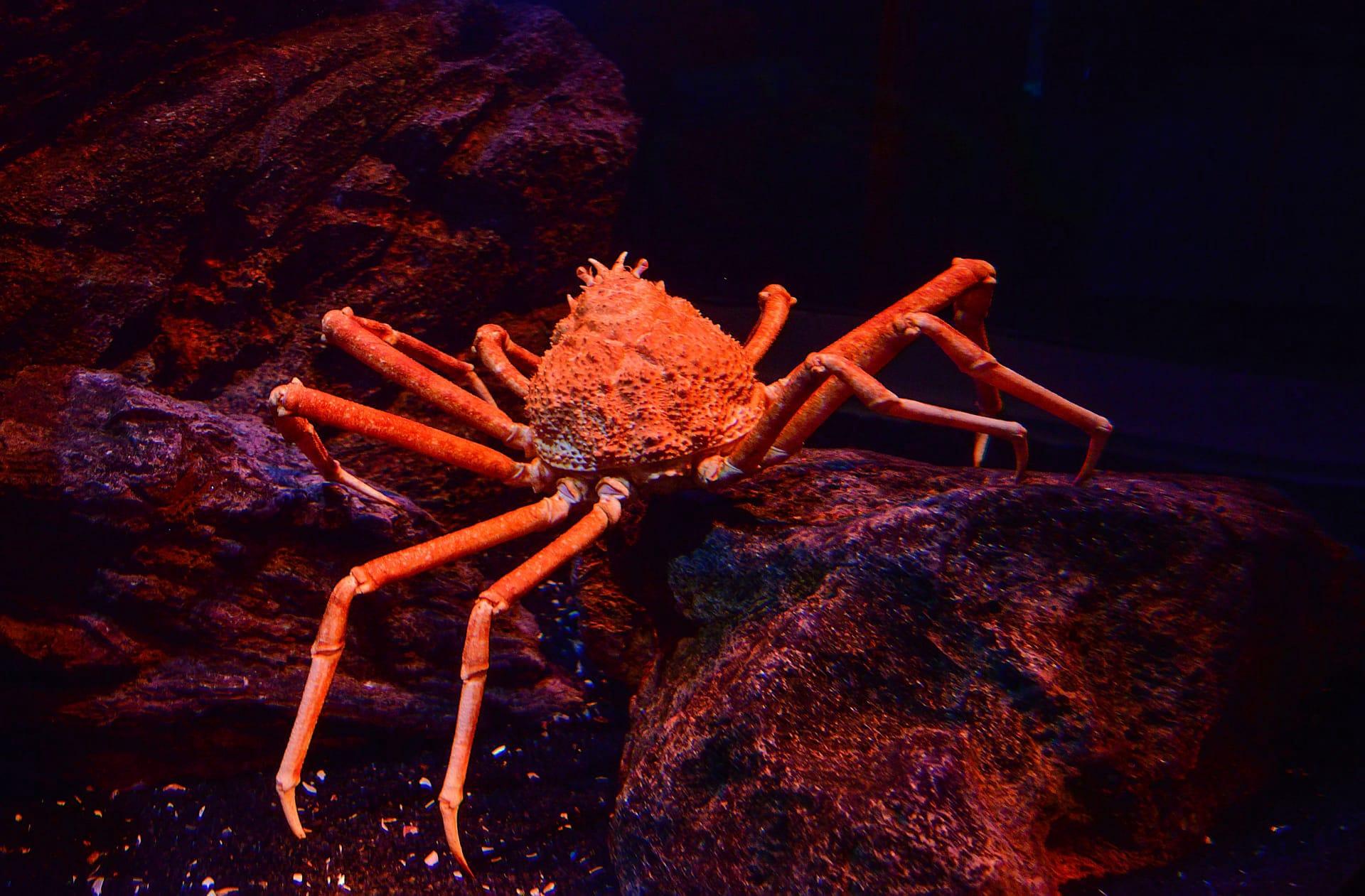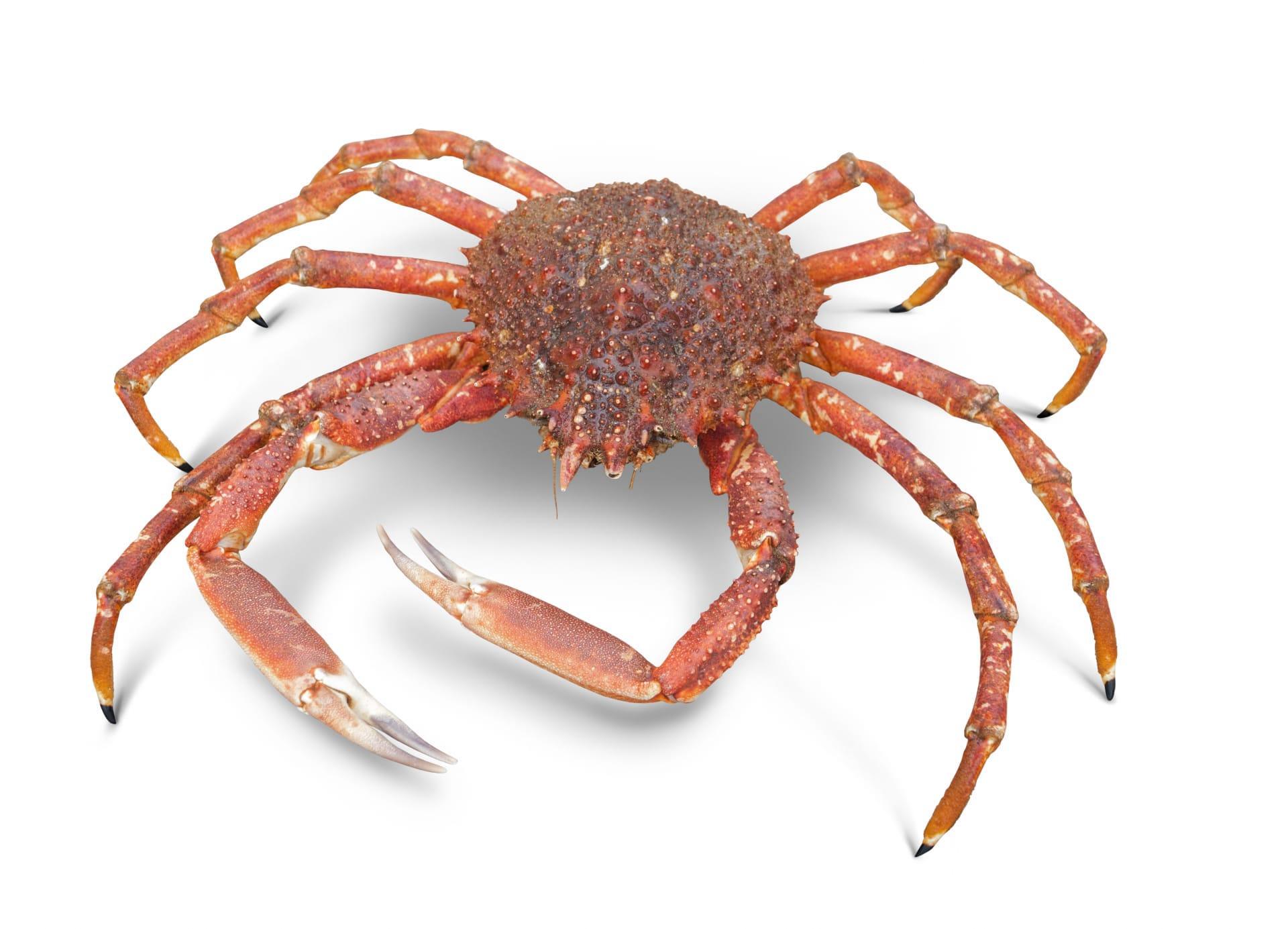Spider Crab
- Home /
- Mini Encyclopedia /
- Animal /
- Spider Crab
1
Spider crabs, belonging to the family Majidae, are a diverse group of marine crustaceans known for their long, spindly legs and camouflaged exteriors. This family encompasses over 200 genera, making it one of the most varied crab groups. Notably, the Japanese spider crab (Macrocheira kaempferi) holds the record for the largest leg span of any arthropod, reaching up to 12 feet from claw to claw. These creatures exhibit remarkable morphological diversity, adapted to a wide range of marine environments.
Spider crabs are found in oceans around the world, thriving in a multitude of habitats from shallow tidal pools to the dark depths of the ocean floor, at depths exceeding 2,000 meters. Their global distribution spans from the cold waters of the Arctic and Antarctic to the warmer regions of the Atlantic, Pacific, and Indian Oceans. The Japanese spider crab, for example, is primarily found off the southern coasts of Japan, inhabiting depths of 50 to 600 meters. This wide distribution highlights the adaptability and ecological versatility of spider crabs across various marine environments.

2
Question: Are spider crabs dangerous to humans?
Answer: Contrary to common misconceptions, spider crabs are not dangerous to humans. Their imposing appearance, especially in species like the Japanese spider crab with its vast leg span and rugged exterior, can be misleading. However, these crabs are generally docile and tend to avoid human interaction. Their primary defense mechanism is camouflage, using their long legs and carapaces to blend into the surrounding environment rather than aggression. Instances of spider crabs harming humans are extremely rare and typically occur only when the crabs are provoked or handled improperly.

3
One of the most fascinating survival strategies of spider crabs is their use of camouflage. They often adorn their shells with sponges, algae, and other ocean debris, creating a living "garden" on their backs that blends seamlessly with their surroundings. This not only protects them from predators but also aids in hunting by allowing them to approach prey with stealth.
Another key survival tactic is their molting process. Spider crabs have a hard exoskeleton that does not grow with them, necessitating periodic shedding to allow for growth. This molting process is a vulnerable time, as the new shell takes time to harden. To mitigate this risk, many species retreat to secluded areas or bury themselves in the sand during molting, emerging only once their new armor has sufficiently hardened.

4
In marine ecosystems, spider crabs play a crucial role in the balance of the underwater food web. They are both predators and scavengers, feeding on a variety of organisms including algae, detritus, mollusks, and small fish. This diet makes them important for controlling the population of these species and maintaining the health of the seafloor community.
Additionally, spider crabs serve as prey for a number of larger marine animals such as octopuses, large fish, and even other crab species. Their presence and abundance in different marine environments indicate the health of the ecosystem, making them valuable indicators for marine biologists studying ocean health and biodiversity.

5
Film: "Crabs of the Deep: Spider Crabs' Journey" is a British documentary released in 2018. It explores the mysterious lives of spider crabs in the depths of the ocean, showcasing their migration patterns, molting process, and survival strategies against the backdrop of the ocean's vast and varied landscape.
Book: "The Secret World of Crabs" by Harold Morton, published in the United States in 2020, dedicates a significant portion to spider crabs. Morton delves into their unique adaptations and roles within marine ecosystems, bringing to light the intricacies of their behavior and physiology.
Book: "Marine Marvels: The Wonders of Spider Crabs" by Fiona Clarkson, released in Australia in 2021, focuses on the diversity and ecological significance of spider crabs around the globe. Clarkson's work is rich with vivid photographs and detailed descriptions, aiming to elevate public awareness and appreciation for these remarkable marine creatures.